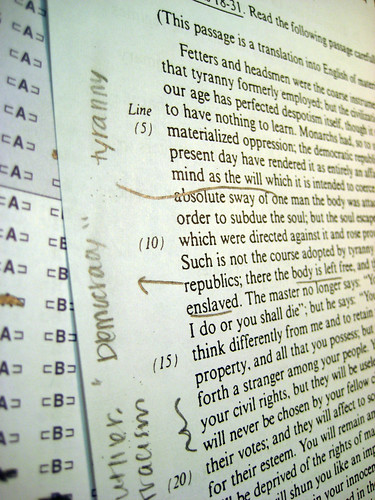 |
| USA by J.Ghouse |
As an English teacher I marvel at the Address every time I read it. There's the elegance of the sentences – the antithesis and epiphora – and the subtlety of the asyndeton. And there's the diction – the repetition of "dedicate"; the optimistic tone of the Address due to words like noble, endure, live, struggled, consecrated, brave, resolve. Finally there's Lincoln's deft craftmanship, the movement through time and place as the speech unfolds. The paragraphs progress from the past "four score and seven years ago" to the "now," and finally to the future, to the vital "unfinished work" of the "great task remaining before us." The speech physically takes the reader from the continent to the battlefield as a whole and ultimately to "this ground" where the people were gathered for the Address. (This all is summarized in the presentation that I share at the bottom of this post.)
That's how I think of the document as an English teacher....
But as a citizen I can't help celebrating the 150th anniversary of the Gettysburg Address without wondering what Abraham Lincoln would think of the people who now lead us. I think he'd be disappointed in our many politicians who choose self-interest over problem-solving, politics over people. Addressing the many issues now facing America will take the kind of courage and self-sacrifice for the common good that Lincoln and his audience knew all too well; in contrast, our current leaders fret over alienating voters with the reality of what it will take to actually dedicate ourselves as a people to the great tasks before us.
On November 19, 2013 there will be no shortage of officials who will use the occasion of the anniversary of the Gettysburg Address to stage splashy press conferences. But in my mind the real legacy of the Address is the optimism President Lincoln conveyed to a people during one of the most trying times in American history, an optimism that was based on a realistic assessment of the situation and the recognition of the self-sacrifice in the struggle for the common good. Today we don't need attractive leaders who can recite some phrases from the Gettysburg Address; we need people who understand that our nation is being tested much like it was 150 years ago. We need leaders more like my students – people who know that when you're being tested, it helps to have some answers.








